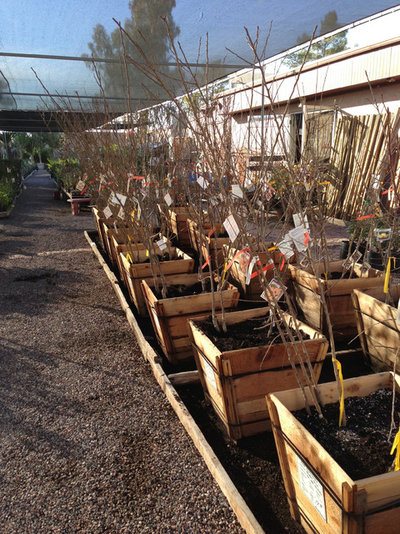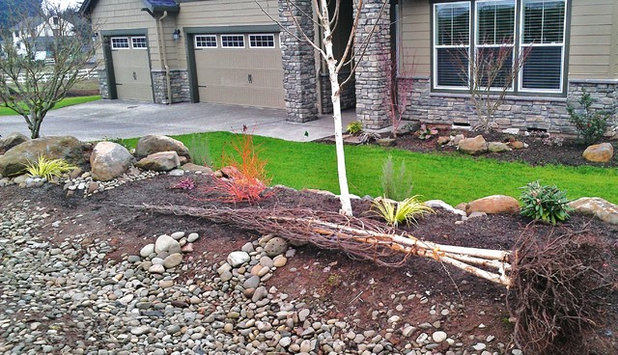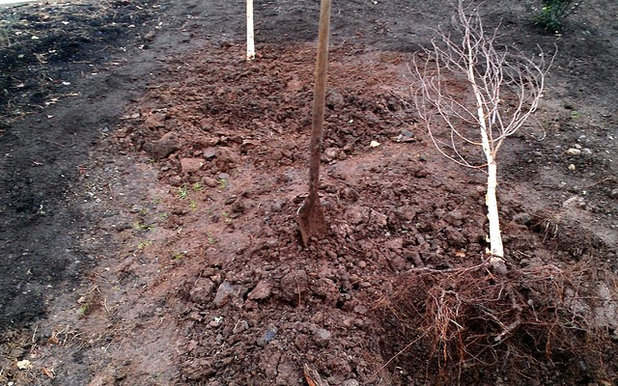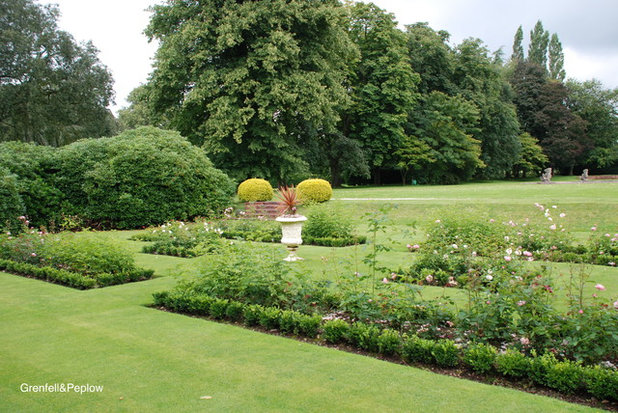Bare-root plants aren’t ever going to make the cover of a magazine. You won’t see glamorous models posing beside them, nor will they make headlines as the “next new thing.” But for gardeners in the know, these dormant plants have a beauty all their own. These are, quite simply, dormant trees, shrubs and perennials that are sold from late fall to early spring, depending on your climate zone, both at nurseries and through garden suppliers.
The name comes from the fact that the soil is stripped from the roots, making them easier and less expensive to ship, which in turn means they’re less expensive to buy. They have other advantages as well. Because bare-root plants have already begun to grow, they’re a step up from starting a plant from seed. This is an option that is great for novice gardeners in particular, due to its reliability.

Noelle Johnson Landscape Consulting
Gardeners can often find bare-root varieties in catalogs and through online retailers that aren’t available in local nurseries. Finally, the plants’ availability at the start or end of the growing season means they can get a head start on establishing themselves in your garden.
Note: Bare-root plants are meant to be planted while they are dormant. For the best outcome, get them in the ground before the buds start forming.
Choosing a plant. In a nursery look for plants with healthy and flexible roots. If they’re somewhat dehydrated, you can revive them. If some roots are shriveled, you can cut them off. But if more than half the roots are in bad shape or if the roots are mushy, look for a new plant.
The same is true for plants you order online or through catalogs. Unwrap bare-root plants as soon as you get them, and contact the retailer if they aren’t in good shape. (It might be worthwhile to check return policies before you buy.)

High Tech Turf & Trees
Once you have your plants. Ideally, you would put the plants in the ground the same day you get them. However, especially with mail-order plants, life can interfere with the best-laid planting plans.
If you do need to wait a few days, store the plants in a cool, dark place (around 35 to 40 degrees Fahrenheit, or 2 to 5 degrees Celsius). To keep the roots moist, rewrap them in the material the plant was shipped in or wrap them in peat moss, sawdust or damp newspapers.

High Tech Turf & Trees
You can also “heel in” plants, especially if you need to wait longer to plant. Dig a shallow trench with tapered sides, preferably on the north side of the yard, where there won’t be a lot of sun. It should be deep enough that the roots of the plant will fit entirely in the trench. Lay the roots of the plant in the trench at an angle so the plant above is at ground level. Loosely cover the roots with soil. Keep the roots moist while you’re storing them.

Grenfell & Peplow
How to plant. If possible choose a calm and windless day. Soak the roots in water for about two hours — you can go longer if they look dehydrated, but not as long as overnight.
Dig a wide and shallow hole with a mound in the center. Remove all the packing material or soil from the plant and place the top of the root ball just above the soil line. Spread out the roots, then fill in the hole with soil, pushing the soil in among the roots to cover them completely. Water slowly, then mulch up to about 3 inches from the trunk or stem of the plant to keep in moisture and smother weeds.
This formal rose garden features a selection of David Austin roses and small box plants — all bought bare-rooted in November at much less cost than potted plants. This photo shows the garden 6 months later.
Regional Guides: What to Do in Your Garden This Month





